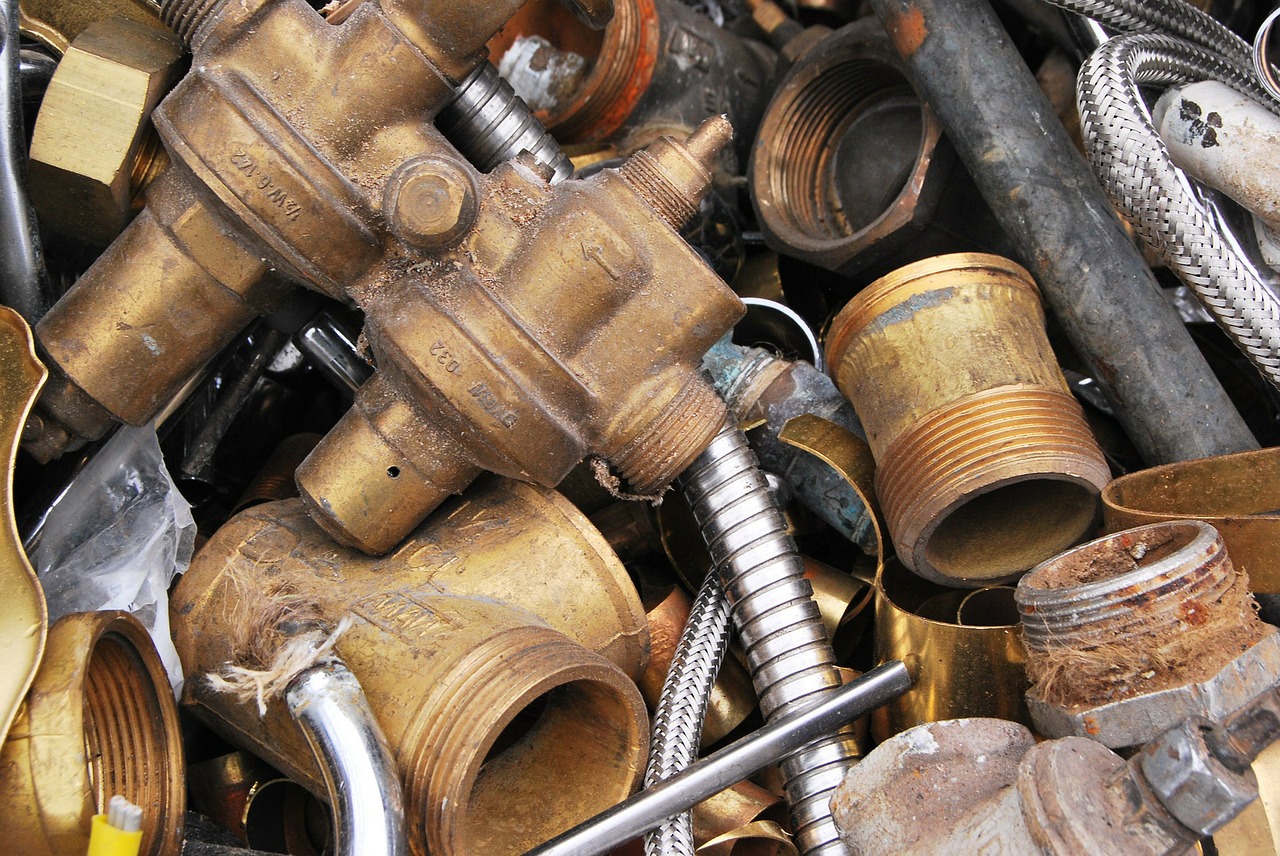
Identifying brass is a far more difficult and detailed task than identifying other metals, like copper. This is because many of the grades have similar applications and uses, but their chemistry can be significantly different. The use of a handheld analyser can be hugely beneficial in correctly identifying the different types that you are dealing with when you want to sell brass scrap.
Brasses are metals that contain zinc as the primary alloying element. They can also contain other alloying elements (such as iron, aluminium, nickel and silicon). When identifying this metal, it can be useful to have a magnet, a bench or handheld grinder, or a heavy-duty steel file on hand. Good lighting can also help you to see the true colour of the object.
Red
This type of brass is popular because of its favourable combination of casting properties, machinability and general utility. It is commonly used for castings, valves, pipe fittings, water pumps, meter housings, small gears and high quality plumbing fixtures. The metal will be reddish/light yellow (medium weight) in colour and has no magnetic reaction.
Semi-Red
This type of brass, known as a “workhorse” alloy, comprises the majority of commercial plumbing fixtures, cocks, faucets and certain low-pressure valves. It is popular because of its relatively low cost, good machinability and good casting properties. The metal will be reddish/golden red in colour (but duller than full red) and has no magnetic reaction.
Yellow
This type of brass is made up of two families – the lower strength leaded alloys and the high strength manganese bronze ones. Both of these alloys are primarily used because of their low cost and good corrosion resistance. They’re also preferred with a distinctive yellow colour is required. The metal is yellow in colour and has no magnetic reaction.
Manganese Bronze
The name of this high strength yellow brass is inaccurate and somewhat confusing, as some alloys in the category actually contain very little manganese. These alloys are used in applications where relatively high strength is required in combination with good corrosion resistance and moderate cost. The metal is a full yellow (medium weight) in colour.
Hard
Also known as leaded tin bronze, this type of brass uses tin and lead to form a strong, but easily machinable, alloy. It is used extensively in bushings and bearings because of this. This narrow field of use makes this metal one of the least common grades that you’re likely to come across during your hours of collecting scrap.
If you want to sell brass scrap, we hope that the information provided above has given you a better idea of the different grades you’re likely to encounter. In some cases, knowing which type of brass you’ve got on your hands can actually impact your overall profits (as some are worth more than others – it’s all to do with the metals that have been used in the alloy). Happy hunting!